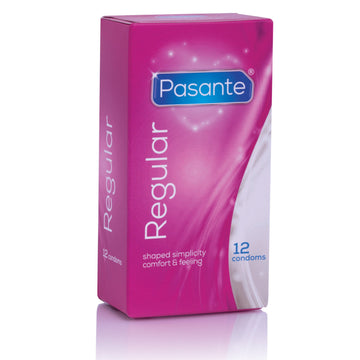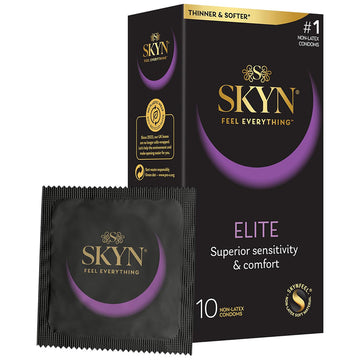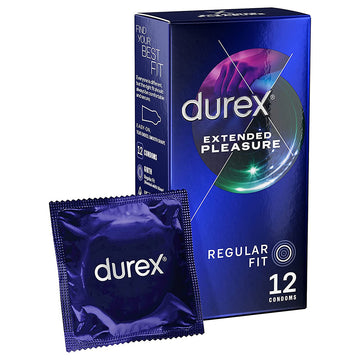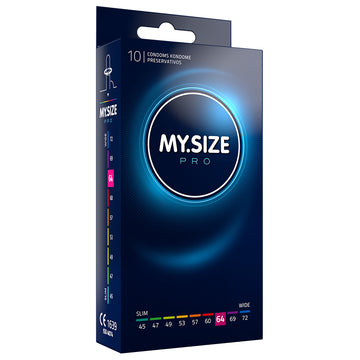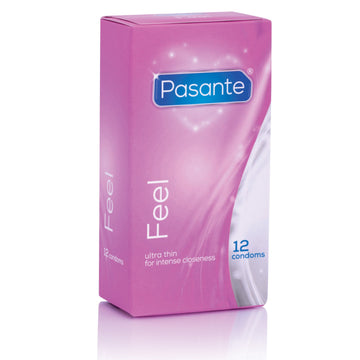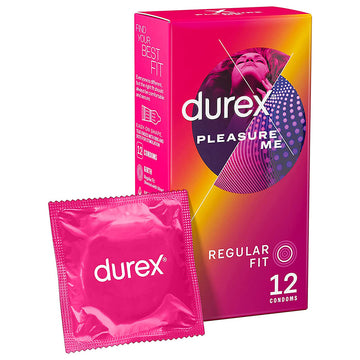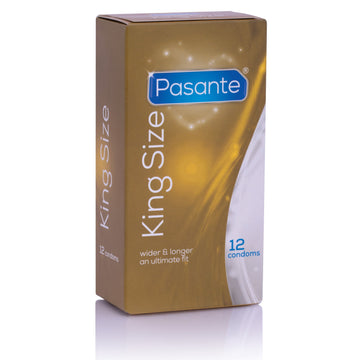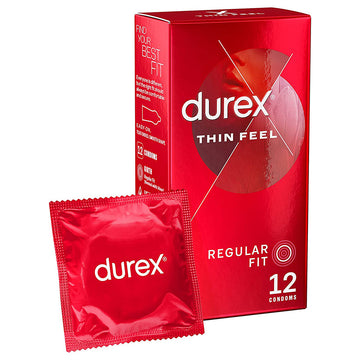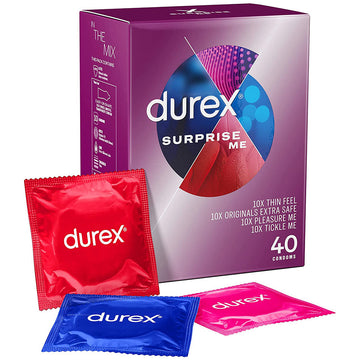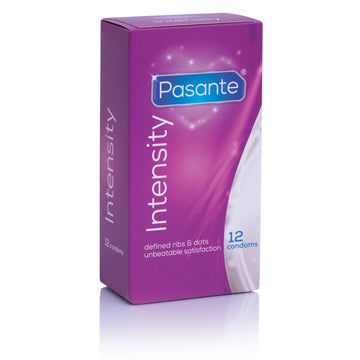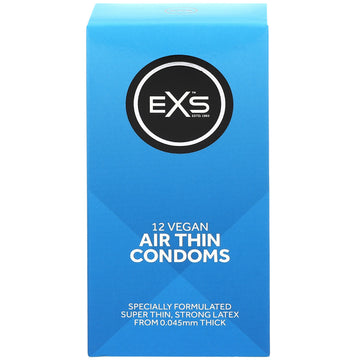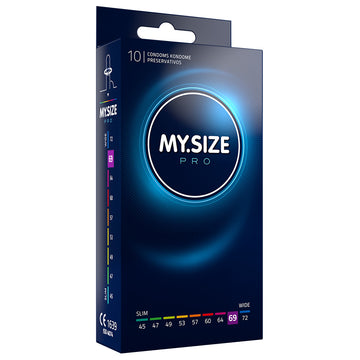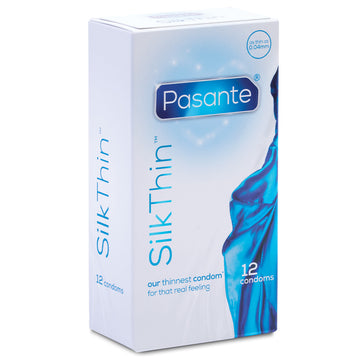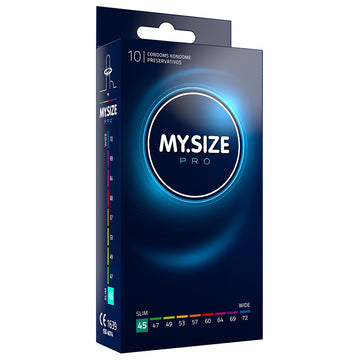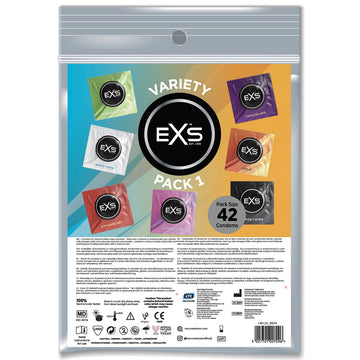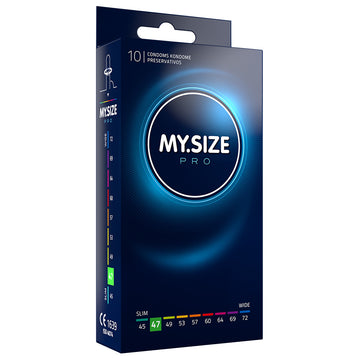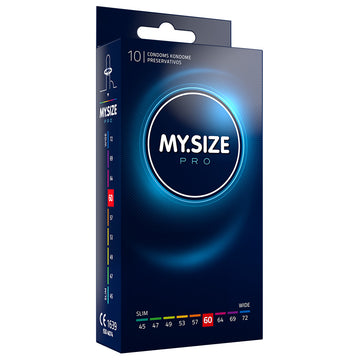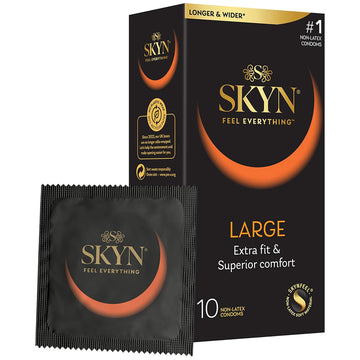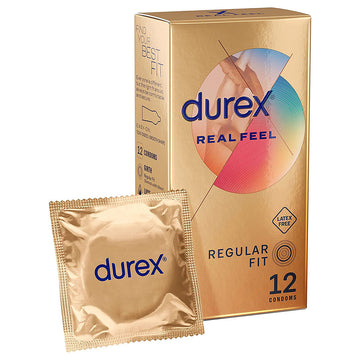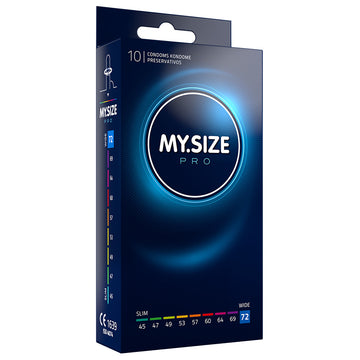Condoms
What are condoms and how do they work?
Condoms are a “barrier” contraceptive method that also protects against sexually transmitted infections. They are a thin sheath made of latex or other thin and elastic material designed to stop pregnancy by preventing sperm from meeting an egg.
In its wide understanding, the term is used when referring to male condoms, which are designed to wear on the penis during intercourse. However, some brands also offer a range of female condoms that are fitted inside the vagina before sex. We have a large range of male condoms and female condoms, with discreet delivery to make sure buying condoms is as easy and hassle-free as possible.
When were condoms invented?
Whilst the condom as we know it today is a rather modern invention, the concept of condoms has been around for centuries.
According to legends, the first condoms were invented around 3,000 BC by King Minos of Crete. Allegedly, the king used a goat’s bladder sheath as a female condom during intercourse to protect his partner from his semen containing scorpions and serpents.
The first male condom is believed to have emerged during the Roman Empire, although there is little evidence about the use of male contraception before the Middle Ages.
Prior to the 15th century, glans condoms that only covered the penis’ head, have been used throughout Asia. It is widely believed that these condoms made from oiled silk paper or lamb intestines were the precursors of modern condoms.
In Europe, penis sheaths started to widespread in the 16th century not to prevent pregnancy but to protect men against syphilis. Over the decades, many people started to use them for protection against sexually transmitted infections and pregnancy, but since rubber wasn’t a thing at the time, these “modern” condoms were made of lamb intestines or fabrics.
History changed in 1839 when Charles Goodyear invented the first rubber condom, which was later breveted in 1844. These first condoms were reusable and thicker than the condoms we use today, but the design has remained essentially unchanged until these days.
How to use condoms?
Condoms are very easy to use by people of all ages. All you have to do is unwrap the condom wrapper, place the condom on your penis head, and roll it all the way down to the base. However, there are a few essential things to take into account to prevent condom breakage and ensure maximum protection.
- Always wear a condom the right way up because each side of the condom sheath may be lubricated differently. That’s why you could either tear the condom, or it could slip off if you’re wearing it the wrong way. To figure out which side is up, remember that the condom’s rim should always be on the outside when you roll it down.
- Always pinch the teat end of the condom to remove the air from the pouch. Failing to do so may result in the condom breaking during intercourse or when you’re ejaculating due to increased pressure.
- Don’t fit the condom too tight on your penis head. The condom sheath should be loose enough in that area to allow for easy gathering of your semen. If the condom is too snug on your penis head, semen might leak.
- Ensure you’re using the right size condom. Wearing a condom that is too tight around the base is not only uncomfortable but could prevent ejaculation and lead to erectile dysfunction in the long run. A condom that is too loose can easily slide off during intercourse.
How to find the right size condom?
Finding the right size condom sounds tricky, but it is easy to figure out. If you’ve never used condoms before, you can buy a box of regular size male condoms, a size that suits most men, and see how it feels. If you want to skip the trial and error part, measure your penis girth to determine the condom size.
To do this, you will need:
- String (in a light colour)
- A dark colour marker
- A ruler or measure tape
Here’s how to measure your penis size:
- Take the string and wrap it around the thickest part of your erect penis.
- Mark the point where the string meets with the marker.
- Use the ruler or measure tape to measure the distance. Divide your result by 3.14 and check your girth size against the condom width on the condom box. You can then choose the right size condom, ranging from small to extra-large.
Are condoms made of latex?
Whilst most condoms are made of latex, non-latex versions of condoms made of polyurethane or polyisoprene also exist.
- Latex condoms: The most common type of condoms, widely available from most brands. Latex is known for its elasticity and resistance, providing excellent protection against pregnancy and sexually transmitted infections. New technologies also allowed manufacturers to make ultra-thin latex condoms that enhance sensitivity. The material is also cheap but inadequate for condom users with latex allergies. Latex may also be damaged by oil lubricants, so you should only use your latex condom with water-based or silicone-based intimate lube.
- Polyurethane and polyisoprene condoms: These condoms are as resistant and elastic as latex condoms, providing the same degree of protection. Polyurethane/polyisoprene condoms are also thinner, making an excellent choice if you’re aiming for ultimate sensitivity. Both polyurethane condoms and polyisoprene ones are compatible with all kinds of lubricants and are suitable for people with allergies. However, these materials are more expensive. Thus, you’ll have to pay more for a packet of non-latex condoms compared to their latex counterpart.
Are flavoured condoms safe for oral sex?
Yes. As a matter of fact, flavoured condoms are primarily designed for use during oral sex. What makes them different from standard condoms is the addition of a flavoured lubricant made of food-grade ingredients.
Flavoured condoms are also scented and, most of the time, coloured, too. They’re ideal for enhancing foreplay or covering the odour or taste of latex.
One thing to remember when buying flavoured condoms is that you should check the ingredients if you plan to use them for vaginal sex or anal intercourse besides oral sex. Most manufacturers indicate on the package what type of sex their flavoured condoms are suitable for, and you should stick to the rules.
The reason is that added sugars may contribute to the development of yeast and bacterial infections inside the vagina or rectum. Whilst most condom brands, including Durex, EXS, and Glyde, manufacture flavoured condoms safe for oral, vaginal, and anal intercourse, it is always best to check before buying.
Are condoms 100% effective?
No. Like all contraceptive methods, condoms are not 100% effective. However, condoms are the only contraceptive method that is 98% effective against pregnancy and sexually transmitted infections if used correctly. Contraceptive pills are slightly more effective in preventing pregnancy (99%, if used correctly), but they do not protect against sexually transmitted infections.
The only 100% effective contraceptive method is abstaining from sexual intercourse but using condoms is the best way to enjoy safe sex.
Can condoms break?
Whilst condoms are made from highly elastic and resistant materials; they may sometimes rupture or burst spontaneously. You may also tear or puncture a condom whilst unwrapping it. Condom breakage usually happens because:
- The condom was manufactured improperly – this is why you should only buy genuine condoms made by popular brands.
- The condom was not stored correctly. You should always store the condoms in a cool, dry place, away from direct heat and sunlight. The temperature at which condoms are stored shouldn’t exceed 30°C, and you should avoid keeping a condom in your wallet or pocket for more than a few hours.
- The condom was used after it has expired. Latex may degrade in time, and the lubricant can also dry off.
- The condom was damaged when it was removed from the package. Sharp nails and jewellery, tearing open the packet with your teeth, or using scissors to open the wrapper could puncture or tear the condom.
- The condom was too small or too larger.
- The condom was used with the wrong lubricant, or you may have used too little lube. Oil lubricants often alter the structure of latex condoms, leading to ruptures.
- You did not use the condom correctly.
Can I wear two or more condoms at the same time?
No. Wearing two or more condoms will not increase protection. On the contrary, it may cause condoms to break due to increased friction between the various layers of latex.
Despite being thin sheaths, condoms are strong enough to withstand friction during sex. You can increase their resistance by using the condom with a condom-friendly lubricant (most water-based and silicone-based lubricants are safe to use with latex and non-latex condoms).
If you feel that the condom is too thin to resist rougher or anal sex, simply use a thick condom designed specifically for the purpose – most brands, including EXS, Durex, Mates, Pasante, and SKYN, manufacture thick or extra lubricated condoms.
Can condoms hurt you?
The right type and size condoms cannot hurt you. However, there are a few things you should take into account to ensure you’re using the right product for you.
- Latex condoms may hurt you or your partner if you or your partner are allergic to latex. Latex allergy manifests with rashes, hives, runny nose, watery eyes, and sometimes coughing and sneezing. If you notice any of these symptoms appear when you’re using latex condoms, switch to a non-latex variant.
- The lack of lubrication can increase friction during sex when using a condom. Whilst most condoms are lubricated, it is always recommended to add more condom-safe lubricant.
- Condoms with spermicide may cause allergic reactions or irritate your partner’s skin. Since research has shown that regular condoms are equally effective against pregnancy as spermicide-lubricated condoms, you can simply use condoms without spermicide to prevent this issue.
- Condoms that are too small may also hurt you by cutting off the blood supply to your erect penis. The short-term effects include delayed ejaculation; this is why some men prefer using a smaller size condom to combat the symptoms of premature ejaculation. In the long run, though, using a smaller condom frequently could lead to erectile dysfunction. For this reason, you should use a delay endurance condom in your regular size to combat premature ejaculation instead of switching to a smaller size. Delay endurance condoms use either synthetic or natural anaesthetics to slightly numb your glans and delay ejaculation without any long-term side-effects.
When do condoms expire?
Most condoms have a 5-year expiration date from the time of manufacture, but this might change for flavoured, spermicide, or non-latex condoms. The easiest way to tell is by checking the expiration date printed on the packet and on every individual wrapper. At Condoms.uk, we only sell genuine condoms with a long shelf life.
What are vegan condoms?
Vegan condoms are condoms manufactured without any animal ingredients and that have not been tested on animals.
The concept was introduced when the first latex condoms manufactured without the use of casein were invented. Casein is an animal-origin protein usually found in milk. This protein was involved in the latex manufacturing process for decades, helping transform the natural rubber fluid into an elastic and flexible sheath for latex condoms.
With the new discoveries and technological advancements, numerous companies have started using thistle extract instead of casein in their condoms. At the same time, companies that make vegan condoms also avoid using ingredients that have been tested on animals and don’t test their own condoms or intimate lubes on animals.
Condoms that are 100% vegan are usually certified and marked with the Vegan Society logo – or the logo of a similar institution, depending on where the vegan condoms have been manufactured.
Are condoms biodegradable?
Latex condoms are technically biodegradable. However, the lubes or spermicides condoms are coated with may not be biodegradable. Scientists have not yet studied how long it takes for a latex condom to break down in a landfill.
Polyurethane and polyisoprene condoms are technically made from plastic, and they are not biodegradable. They aren’t recyclable, either. So, the best thing you can do is to wrap this non-latex condom in paper tissue and throw the condom in the bin immediately after use.
Never flush used condoms down the toilet. Not only may they clog your pipes, but flushed condoms may end up polluting our rivers, seas, and oceans, threatening the marine life and the marine ecosystem at large.
Where to buy condoms?
You can buy the best latex and non-latex condoms online, right here at Condoms.uk. Committed to bringing the best sexual health products to your doorsteps, we only sell genuine condoms sourced directly from brands or their official distributors in the UK. Browse our range now to buy condoms from the best condom brands.

